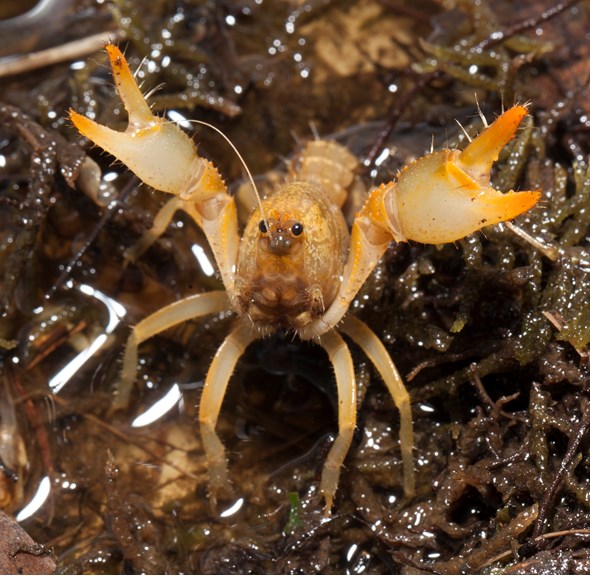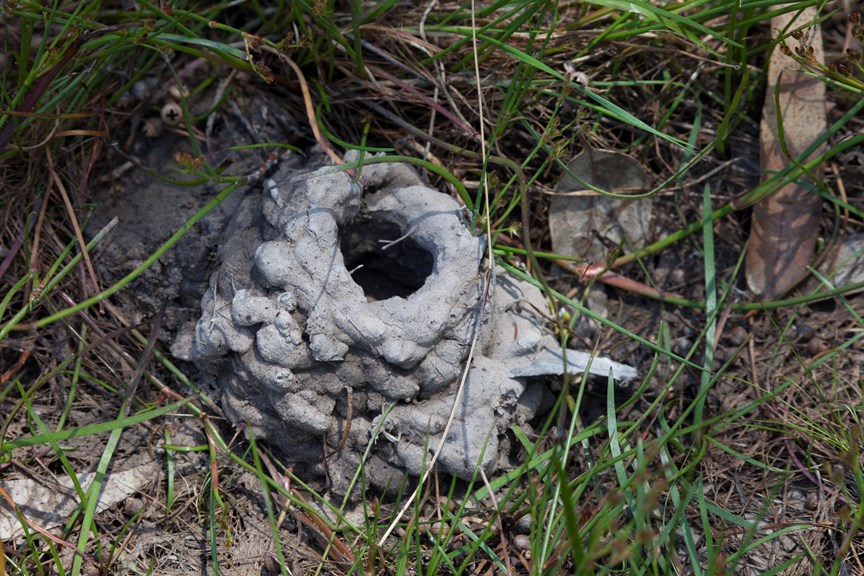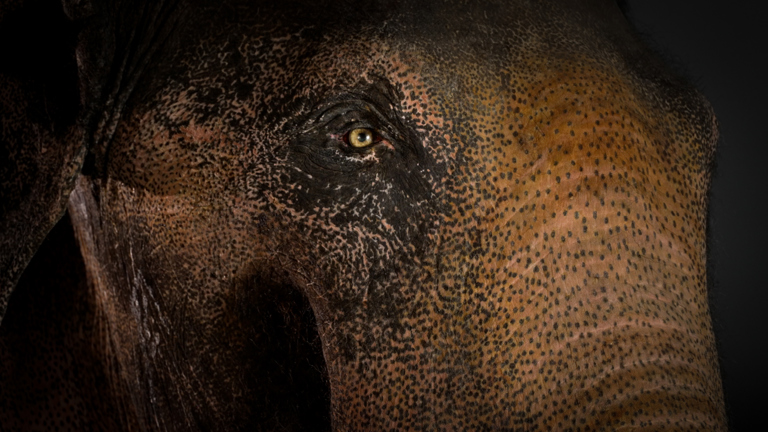Who’s digging in my lawn?
Whose hole is this? It’s a land crayfish!
There is a secret world beneath your feet.
Residents of south-eastern Australia, especially of the Dandenong Ranges near Melbourne, may find round holes appearing on their lawns. Sometimes, if left alone, high chimneys of soil grow up from the holes. These structures are the work of land crayfish.
Who’s digging the holes in my lawn?
Land crayfish!
Land crayfish (sometimes called ‘land yabbies’ or ‘land crabs’ although they are not crabs) are relatives of yabbies, Murray Crayfish and, more distantly, marine scampi.
These animals all belong to a group of crustaceans called the Astacidea, which all have a pair of equal large claws and two other pairs of smaller nippers.
That is, three of the five pairs of legs are chelate—they have pincers.
The family Parastacidae, to which yabbies and land crayfish belong, is found only on southern continents but is most diverse in Australia.
Land crayfish are one of 34 species in the genus Engaeus. Many of these species have a quite limited geographic range and some are confined only to a single catchment, making them incredibly unique to their environments.
Species of Engaeus are smaller than the more familiar and edible yabbies (Cherax destructor) and only grow to a maximum length of 120 mm.
The carapace—the external shell of its body—is more flattened from side to side than in a yabby and the abdomen (tail) is smaller and often bristly.
The tails are so small that, unlike yabbies, they are inedible.
What is inside a land crayfish’s burrow?
Land crayfish live only in damp environments, which is why the hilly regions of eastern Victoria and Tasmania are home to most species.
Here, they are found in swamps, near streams, in eucalypt forests or in rainforests.
Their subterranean homes vary according to species and depend on their habitat.
Some species, such as the Dandenong Burrowing Crayfish Engaeus urostrictus, live close to streams.
If you could enter the hidden world of the soil, you would find burrows down to 25 cm deep at the level of the water table.
Water fills a small chamber at the bottom of the branching burrowing system, covering half a square metre.
As the land crayfish excavates the burrow it brings soil to the surface and places the pellets around the entrance until a chimney grows up to 13 cm high.
Other species like the Tubercle Burrowing Crayfish Engaeus tuberculatus live on slopes away from streams.
Their burrows do not reach the water table, and the subterranean chambers rely on rain or seepage to fill with water.
Exit burrows diverge near the surface where there are several openings.
Waste from the excavations is brought to the surface where pellets of soil are deposited and run down the slope to form a fan of dirt.
The burrows of land crayfish are just one of many structures and tunnels that scaffold the underground environment.
What are land crayfish doing underground?
The land crayfish spends most of its time in the chamber at the bottom of its burrow so is rarely seen. Only at night does it become active, bringing soil to the surface.
As part of the soil ecosystem it feeds mostly on decaying roots and buried plant matter, but sometimes eats worms or insects.
Some species live alone, but others are more communal.
Male and females usually come together to mate in spring and eggs are incubated attached to the tail of the female.
Juveniles hatch in mid–late summer. After hatching they may remain in their parents’ burrow or migrate to start a life of their own.
Living amongst the land crayfish is a very specialised fauna of aquatic crustaceans and insects, some not found in other watery habitats.
Are land crayfish endangered?
Many of the precious habitats that land crayfish call home are threatened.
The damp forests where they make their burrows are impacted by land clearing and drainage, and several Engaeus species are considered threatened or vulnerable.
So next time you take a walk through the forest, make sure to appreciate the tiny critters that may be hiding below your very feet. And if you like, you can find out what other creatures may live in the soil and call your own backyard home.
Discover a world 4 billion years in the making. Visit the Our Wondrous Planet exhibition at Melbourne Museum and experience the incredible connections that unite all life on Earth.
Further reading
Horwitz, P. H. J., Richardson, A. M. M. and Boulton, A., 1985. The burrow habit of two sympatric species of land crayfish, Engaeus urostrictus and E. tuberculatus (Decapoda: Parastacidae). Victorian Naturalist 102: 188–197.












